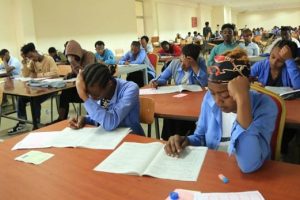
Emperor Tewodros II was Emperor of Ethiopia from 1855 until his death in 1868. He is considered as the founding father of modern Ethiopia.He was the first emperor in the modern history of the country endeavored to realize unification by shortening the era of lords which locally known as Zemene Mesafint.
He began the transformation of Ethiopia in terms of technology and knowledge by applying it among the foreigners and Ethiopians and realized Sebastopol cannon at his technology hub Gafat, Gondar.
Due to his strong pursuit for wisdom, Tewodros II collected various manuscripts including ancient parchment books to archive them in a library that he had planned to build. However he had lost his life before the completion of his goals.
The emperor committed suicide in 1868 following the battle of Maqdala that took place due to the British expedition to release its captivated citizens who were also the partners of the emperor in building the cannon. Tewodros II was buried at the Mehabere Selassie Monastery in his native Quara, Gondar. After the Battle of Maqdala, Emperor Tewodros’ son, Prince Alemayehu, was taken to Britain, under the care of Captain Tristram Speedy.
He died from pleurisy at the tender age of 18, in Leeds, and is buried within the precinct of St. George’s Chapel at Windsor Castle. However, the incident followed by unethical mishaps including taking the locks of hair of the emperor and looting the books he collected and other precious treasures.
A study conducted by the Authority for Research and Conservation of the Cultural Heritage more than 1,000 parchment books and unidentified numbers of precious heritages had been taken to England during the battle of Maqdala.
Even after that, the country’s treasures had been looted in various times including the five year long fight with fascist Italy. Among others, the major reason to the looted heritages is the country’s endless war history within and with foreign rivalries.
Due to various efforts made by organizations and patriotic citizens and foreign partners some heritages including Axum Obelisk, crown and sword and prayer book of King Tewodros II among others were returned. Accordingly, the national effort to return stolen heritages is bearing fruits as the country has been regaining the heritages through time,
Ministry of Culture and Tourism (MoCT) disclosed. Country’s strong diplomacy and consistent negotiation helped to the return of the heritages that have been taken abroad in various times, said Ministry Public and International Relations Director Gezahegn Abate.
Recently, a delegation led by MoCT minister Dr. Hirut Kassaw returned home with the locks of hair of emperor Tewodros II. Before it head to home, the delegation had discussion with its British counterparts and stakeholders on various issues and mainly about the return of Ethiopia’s heritages including the remains of prince Alemayehu Tewodros, he said.
During the discussions took place in England, Dr. Hirut formally requested the British Museum to return 11 replica Arks of the Covenant taken following the Battle of Maqdala.
“The Arks act as spiritual anchors for the Ethiopian Orthodox Church and are more than just artifacts,” she emphasized. She also urged the Museum’s Trustees to act on this request so the Arks could return to serve Orthodox believers in Ethiopia as soon as possible, the information from the Ethiopian Embassy in London indicated.
During discussions, the Minister once again reiterated her call for all British institutions with Maqdala artifacts in their collections to return them to Ethiopia where they hold far more significance. She emphasized that the artifacts are a vital source of knowledge, culture and wisdom. They would serve as foundations to boost the future development of Ethiopia.
The handover ceremony for the locks of hair of Emperor Tewodros II’s at the National Army Museum was a new birth in the relations between Ethiopia and the United Kingdom. By the same token, the return of the precious objects can be considered as another special day in the history of our relations, she noted
On behalf of the People and Government of Ethiopia, Dr. Hirut received the human remains in a box covered with the Ethiopian flag from the Museum’s Director, with the crowd ululating in jubilation.
Dr. Hirut applauded the National Army Museum, and it’s Board of Trustees, for the brave and principled decision to return the Emperor’s hair to its rightful home, adding that she hoped that the United Kingdom and Ethiopia will be able to build on this supreme gesture of goodwill in the years to come.
Finally, the Minister called on all museums and collectors who retain Maqdala heritage in their collections to return all Maqdala artifacts to their rightful home. “For Ethiopians, these are not merely artifacts or treasures but constitute a fundamental part of the existential fabric of Ethiopia and its people,” she said.
On 21st March, Dr. Hirut and her delegation visited St George’s Chapel at Windsor Castle – the resting place of the remains of Prince Alemayehu, son of Emperor Tewodros II. Today MoCT is working with British government via Ethiopian Embassy of London to the return of various heritages and the British people showed their willingness to the return of the remains of the prince, Gezahegn stated. “They propose to conduct DNA testing to identify the remains from others in the surrounding graveyards.”
Therefore, the return of the heritages would help to attract more tourists and researchers, earn better currency and enhance the returning process of other heritages. However constraints related to bureaucratic difficulties, legal contradictions, and poor information about the number, types and locating countries of the stolen heritages, among others hindered the returning process, according to Gezahegn.
The country in cooperation with notable Ethiopians and friends [such as LeminSisay, Alula Pankhurst] is exerting efforts to the return of various heritages from abroad including arks, crowns, and vellum books, he noted. “The heritages would promote us more to the world as they are part of our history, culture and knowledge. They would be an input to the large national museum that the country planned to construct soon.”
Despite Tewodros II’s ambition to establish a national library that archived various books of the country, the MOCT is also endeavoring to construct a national museum and it plans to archive such treasures in this museum. Of course the next generation will possibly observe the ambition of the emperor[via the national museum] witnessing knowledge and heritage in one place. This will also help to educate and entertain visitors and collect better currency to the nation in response.
Herald April 23/2019
BY YOHANES JEMANEH





